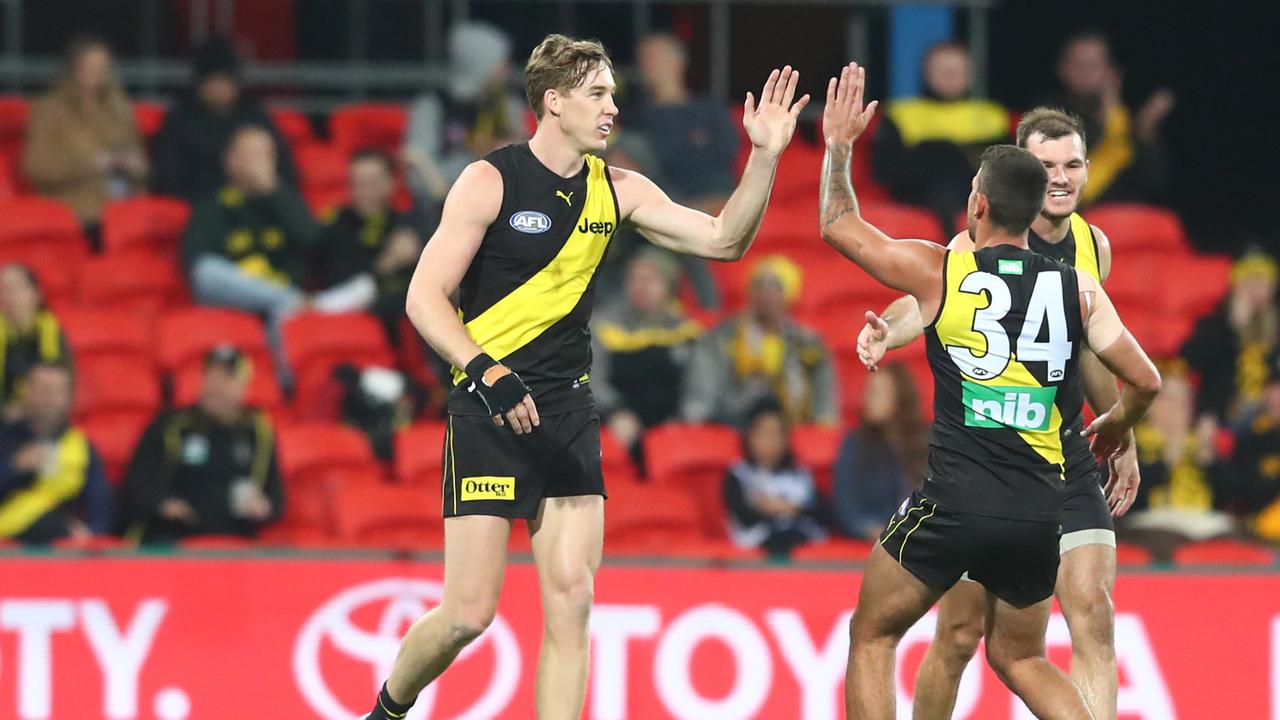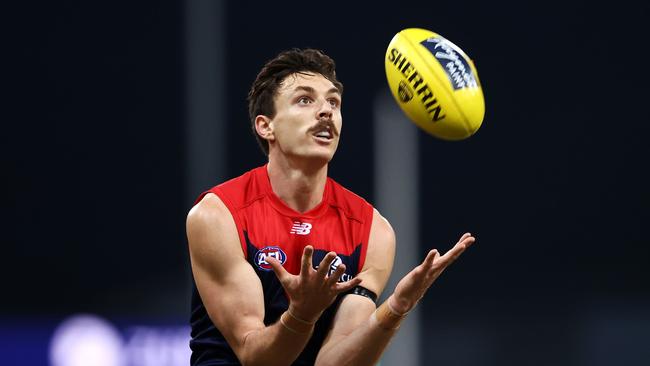The pay models that AFL sides use choose to pay their players
Several clubs will struggle to juggle their salary cap with big names stars yet to be signed. Meanwhile, others have a truckload of room and are set to go on a spending frenzy during the off-season. See how your club is placed.
AFL Teams
Don't miss out on the headlines from AFL Teams. Followed categories will be added to My News.
Hawthorn’s philosophy has always been to share the love when it comes to the coin.
As far as premiership mastermind Alastair Clarkson is concerned, greed is the enemy in a football club.
It’s why Hawthorn has maintained one of the flattest pay models in the competition, ensuring all of its premiership heroes such as Luke Hodge, Josh Gibson and Jordan Lewis all got a reasonably even slice of the money pie.
It was a strategy which eventually lost it superstar Lance Franklin but helped the club win four flags.
But in recent years, the club has weighed up whether it needed to tweak the mantra and offer even bigger bucks than it has in the past in the race to sign to attract the top-line free agents.
It was the case when the Hawks dangled a decent-sized carrot in front of then Gold Coast spearhead Tom Lynch before he chose Richmond.
Former Port Adelaide livewire Chad Wingard also became one of the top-three earners at the club alongside Jaeger O’Meara and Tom Mitchell when he lobbed at Waverley at the end of 2018.
Kayo is your ticket to the 2020 Toyota AFL Premiership Season. Watch every match of every round Live & On-Demand. New to Kayo? Get your 14-day free trial & start streaming instantly >

And presumably the Hawks would be able to find the money required to land Jeremy Cameron should the prized goal kicker want to embark on a free agency return to Victoria.
But for the bulk of the Hawks’ current list, it’s ‘even Stevens’.
Geelong also has a highly structured pay scale that rewards its top dogs such as Joel Selwood, Paddy Dangerfield and Tom Hawkins.
At the Cats, performance pays.
Melbourne has used a scoring system whereby players and coaches score their peers for each game which helps spit out the data required to help calculate contracts.
In addition, the Demons had to pay a premium for defensive recruits Jake Lever and Steven May as part of a $1.5 million a year investment in their back line.

North Melbourne, St Kilda and Brisbane lead the clubs with the most salary cap room for this year’s exchange period as rivals Collingwood, Melbourne, Port Adelaide, GWS Giants and Essendon all juggle much tighter caps.
The Roos still have a truckload of room and face an interesting decision over how much to offer out-of-form spearhead Ben Brown.
The Lions paid more than $900,000 for Lachie Neale this year as part of a life-changing offer but it appears to be one of the most savvy recruits of recent years.
Former Fremantle coach Ross Lyon said the gun midfielder and clear Brownlow Medal favourite had “gone to another level” since joining the Lions at the end of 2018.
MORE AFL NEWS:
AFL Rich 100: Who are the AFL’s highest-earning stars? See the players ranked 1-100
Hawthorn used secret bank accounts to pay premiership stars outside salary cap, Don Scott says
Mick Malthouse explains the death of the full-forward, and how to bring them back
FOOTBALL INDUSTRY GOT WELLER’S CONTRACT WRONG
—Jon Ralph
Lachie Weller has spent two seasons trying to justify a contract figure that if true would have made him one of footy’s highest earners.
As he was traded back to Gold Coast to be closer to family, the Suns handed over a No.2 overall selection for a lovely ball user who seemed to lack star power.
The critics came for the trade, with some even labelling it footy’s worst-ever deal.
To salt the wound, the industry-wide speculation reported in newspapers and online was that he was also on $800,000 a season.
It is a figure endlessly repeated and accepted as fact by most industry figures in an industry where gossip is footy’s second language.
Yet Lachie Weller might just have the most misunderstood contract in football.
If footballers are understandably sensitive about the size of their pay packets, the more accurate picture assembled by weeks of research shows many contracts are far from what they seem.

Weller signed a five-season deal that has the capacity to earn him only $2.5 million over five years given a range of incentives and clauses.
The base component of his deal is closer to $400,000, a far cry from the AFL’s top-100 earners.
He is clearly living up to his end of the bargain on that salary given an exceptional year where his precise kicking and off-field leadership has come to the fore.
Make up your own mind about whether he is worth the No.2 pick used in the trade, even if the Suns believed they had to pay overs to secure a local boy who wanted to get back to Queensland.
Weller and his girlfriend both wanted to return to be close to family and at the time the list of players who wanted to move to play on the Gold Coast was non-existent.
For Weller and the Suns, it has been a deal made in heaven as he thrives in a team hellbent on an inaugural finals campaign and they blend precocious youth with experienced talent like the 24-year-old.
Originally published as The pay models that AFL sides use choose to pay their players

